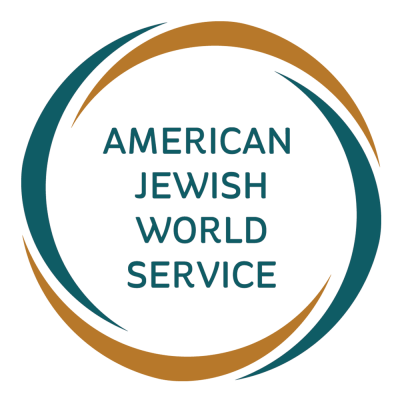
On June 2nd, I went to the Mae La refugee camp, the largest refugee camp in Thailand that houses 50,000 refugees, to greet Aung San Suu Kyi (“Mother Suu” or “The Lady”), the democracy icon of Burma. People of multiple Burmese nationalities, wearing hijab, beautiful long Karen traditional dress, Kachin costumes, and other ethnic dresses, waited in a long line—many of them since 6am—to pay Aung San Suu Kyi a visit. Others went about their daily routines, heading to their plantations, carrying bamboo baskets, arranging firewood under their houses, lying in their hammocks.
As we stood together waiting for Suu Kyi to arrive, refugees shared their feelings and hopes with me.
- A 29-year-old refugee, Seng Nu Mai, said that prior to Suu Kyi’s trip, she felt a burden of disappointment and uncertainty. She was worried that the trip might result in forced repatriation. But Nu Mai overcame her fear when AJWS grantee Karen Women Organization (KWO) distributed letters stating that refugees cannot be forced back to Burma unless they are guaranteed a safe and peaceful environment away from landmines and areas prone to sexual violence. Seng Nu Mai also expressed disappointment with what Suu Kyi can deliver for them but acknowledged that people’s expectations are too high.
- A Karen security guard said that the purpose of Suu Kyi’s trip was to tell refugees that, once democracy is achieved, they could return to Burma. The guard believes that true democracy cannot be attained without Suu Kyi’s administration in the country.
- A 21-year-old Karen girl said with a big smile on her face that someday she “would like to become like Mother Suu” and that she is ready to help her country after she attends international university.
People wanted to hear Suu Kyi deliver a speech but Thai authorities did not allow her to speak at the camp. She briefly stood up on a plastic chair and exclaimed, “You are not forgotten!” She continued, “I will try to do my best for the welfare of you and try to do things for the health issues and others as soon as possible.” The crowd cheered and screamed, “Mother Suu, please use the loudspeaker.” She kindly replied, “I don’t have a loudspeaker. Please quiet down so that you can hear me speak.”
The people gathered right outside of the iron fence of the hospital to have a glimpse of her while she met with people at the hospital. “Mother Suu, please give us a speech!” they shouted. On her way out, Suu Kyi stood up in her car to greet a large number of people who had gathered at the football field very early in the morning and hadn’t even had breakfast. Some people, particularly many children, climbed up on the wood pillars to see Suu Kyi clearly. Journalists from local Thai media, Burmese dissident media including the Irrawaddy, BBC Burmese, and international media including The New York Times, and Japanese journalists were there to cover the story of her visit even though Thai authorities barred them from entering the camp.
On her return from the camp, Suu Kyi told journalists that refugees will return to Burma on their own free will and that “peace or the lack of peace” is the cause of refugees from Burma. She also stated that donors should not cut aid to refugees without first investigating the impact it has on their lives. She affirmed that refugees are most concerned they will be forgotten or ignored.
Suu Kyi’s trip elicited mixed reactions and illustrates the precarious state of things in Burma. Even though Suu Kyi has joined the government as a member of parliament and the international community is relaxing sanctions, there are still very few, and very weak, institutions and legal frameworks to protect citizens.
As the world becomes fixated on Burma’s reforms, the need for a continued struggle for human rights in Burma cannot be overlooked.
AJWS’s work in countries and communities changes over time, responding to the evolving needs of partner organizations and the people they serve. To learn where AJWS is supporting activists and social justice movements today, please see Where We Work.

